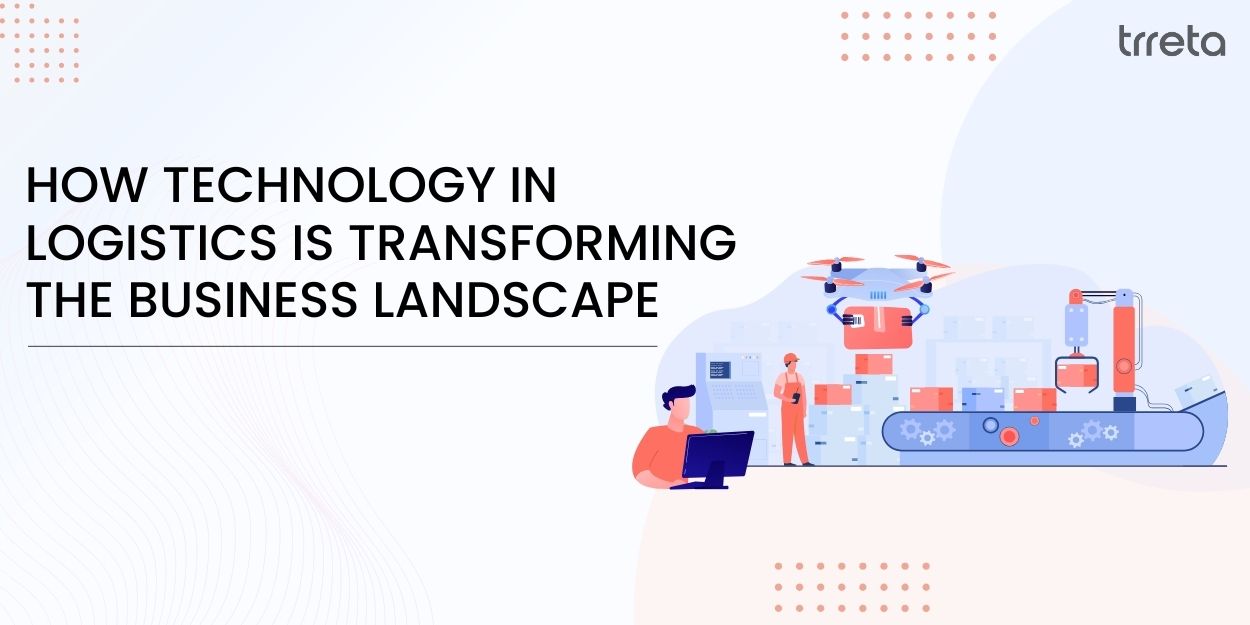Over the past few years, supply chain leaders have been battling an unusual mix of pressures. On one side, there are port backlogs and driver shortages, and on the other hand, there are rising fuel costs and e-commerce overload.
And today, logistics is not just limited to being a backend cost center but has become a frontline business driver - that’s why companies are no longer digitizing to survive, but they are rethinking logistics tech as both a defensive tool and a growth lever.
In this blog, we will see what exactly technology and IT are in logistics, eight core benefits of logistics in tech, how you can implement logistics technology strategically, how to measure KPIs and metrics of technology in logistics, risk and challenges to mitigate while adapting tech in logistics, and how to choose the right logistics partner!
Let’s begin by understanding what logistics technology is.
What Is Logistics Technology and IT in Logistics?
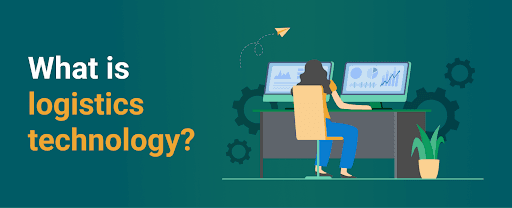
In simple terms, technology in logistics includes the hardware, software, and systems that make supply chains smarter, faster, and more responsive. Be it about GPS-enabled trucks, automated warehouses, or AI platforms for demand prediction - they all are a combination of technology and logistics.
Information technology in logistics is more about digital infrastructure - think Transportation Management Systems (TMS), ERP integrations, and APIs that connect suppliers, carriers, and customers in real time - that’s what real tech looks like in logistics.
Here are some examples and trends of supply chain management -
- IoT sensors that track temperature-sensitive goods in real time (perishable food, vaccines, etc.)
- TMS software that auto-generates optimized delivery routes based on live traffic
- Automated storage and retrieval systems (AS/RS) in warehouses for higher throughput
Now that you have an idea about how tech and logistics work together, here are the major benefits of logistics technology and how that translates into real business impact.
8 Core Benefits of Logistics Technology (With Business Impact)
| Benefit | Real Outcome |
| 1. End-to-end Supply Chain Visibility | Control-tower insights with real-time GPS and sensor tracking. Maersk uses this for ocean logistics. |
| 2. AI-Driven Route Optimization |
Last-mile delivery costs account for 41% of total logistics supply chain costs, says Capgemini. But with logistics technology like predictive ETAs and fuel-saving routes, you can cut down on these costs. |
| 3. Warehouse Automation & Robotics | AS/RS systems improve space utilization and accuracy. Widely adopted in Amazon and Alibaba warehouses. |
| 4. Predictive Analytics for Demand/Supply | By leveraging predictive analytics for demand and supply, you can reduce stockouts by analyzing historical data and weather, promotions, etc. |
| 5. ESG & Sustainability Through Tech | Reverse logistics tools help manage returns and recycling. And carbon tracking tech is gaining popularity as people are becoming more aware of sustainability, which you can use as a competitive edge. |
| 6. Agility in Disruptions | During critical times like natural disasters or port strikes, digital orchestration tools help reroute shipments mid-transit, helping you respond quickly to disruptions. |
| 7. Secure & Compliant Operations | Blockchain + access control reduces invoice fraud and cargo theft. DB Schenker is already piloting this. |
| 8. Labor Productivity & Cost Control | By using robotics and automation, you can improve labor productivity while controlling costs. |
How to Implement Logistics Technology Strategically?
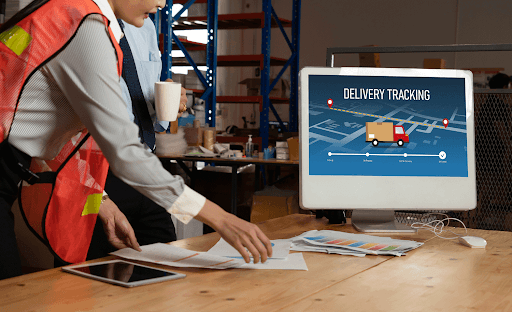
To get the maximum benefits of technology in logistics, it’s important that your logistics software development company implements the right systems correctly!
Here’s how an ideal journey of logistics technology implementation looks like -
1. Discovery Phase
First, you need to identify the current bottlenecks of your business. Is it about delayed deliveries, inventory mismatch, or manual paperwork? Based on the challenges found, the next set of strategies can be decided.
2. Pilot Programs
Once the bottlenecks are identified, it’s time to build small use cases like digital proof-of-delivery or smart routing for one region or warehouse.
3. Scale Up
Once benefits are validated, it's time to scale up the use case and apply it in multiple aspects of your business applications. And here are some tools that are worth exploring -
- TMS + WMS integration
- AI dashboards for route or demand prediction
- Blockchain for invoice validation
- IoT sensors for condition tracking
At Trreta, we help businesses test these tools as proof-of-concept before full-scale implementation so that you can have less risk and more ROI clarity.
Measuring Success: KPIs & Metrics of Technology in Logistics
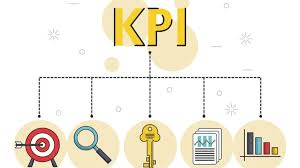
Now, when you have implemented information technology in logistics, here are the real indicators that your logistics tech is working:
- Route Efficiency – Your logistics has fewer detours and less idle time
- Visibility Uptime – Your team can track goods in real time, more frequently, and clearly
- Error Rate Reduction – You will have fewer wrong shipments or delayed deliveries
- Labor Hours Saved – Improve the efficiency of manpower with automation
- Sustainability Metrics – Finally, there will be a reduction in CO₂ emissions or packaging waste
Risks and Challenges to Mitigate While Adapting Tech in Logistics
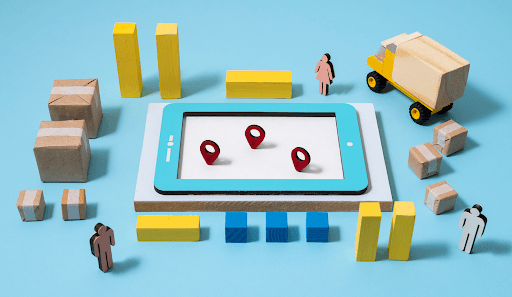
Before you decide to adapt to the trends of supply chain management, here are some aspects that you need to take care of, as mentioned below -
- Data Silos – Make sure the technical systems of your business talk to each other before you implement technology in a full-fledged way
- High Capital Investment – Keep in mind that you will need to invest a high capital before the benefits kick in
- Cybersecurity – Make sure you have solid cybersecurity built in, especially with IoT devices
- Change Resistance – Finally, encourage an adaptive attitude in your staff from operations or IT teams towards the latest tech
Here’s what really works: Start lean. Build a unified data foundation. And bring in a partner who understands both tech and operations.
How to Choose the Right Logistics Technology Partner?
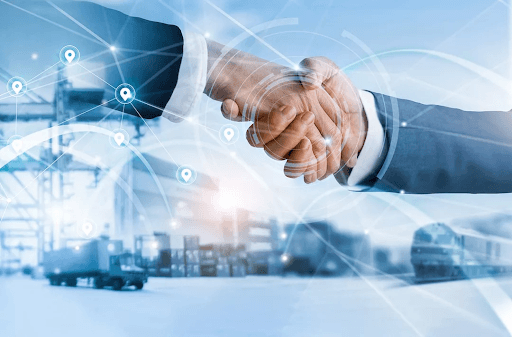
Once you have made up your mind about working with a logistics software development company, here’s what to look for in a tech provider:
- Experience in logistics and supply chain domains
- Ability to integrate with your existing ERP, CRM, and TMS
- Focus on security, compliance, and scalability
- Post-launch support and training
At Trreta Techlabs, we blend logistics know-how with tech innovation so that your businesses can go from manual chaos to seamless orchestration smoothly!
Get in touch with our team today to get a customized roadmap based on your business challenges and requirements!
FAQs
1. What are the key technologies in logistics in 2025?
Some of the most interesting technologies in logistics include AI for routing, IoT for tracking, robotics in warehouses, and blockchain for security.
2. How does technology improve logistics efficiency?
Information technology in logistics reduces delays, errors, and costs while boosting visibility, speed, and accuracy.
3. What AI use cases are transforming logistics operations?
Some of the AI use cases, like route planning, theft prediction, demand forecasting, and smart dispatching, are transforming logistics operations in a true manner.
4. What challenges do businesses face when implementing logistics tech?
While implementing logistics technology, you may face integration issues, capital cost, data silos, and cybersecurity risks.
5. How can Trreta Techlabs help?
Being one of the finest logistics software development companies, we at Trreta help you in your full journey, starting from discovery to deployment. We build logistics tech that solves real business problems, not just IT checklists.
